Biotechnology has grown from a minor player to a formidable force in the pharmaceutical sector. In 1991, biotech accounted for less than 1% of total pharma sales; by 2014, it captured 30%. This rapid ascent is mirrored in operating margins, which have moved from negative territory to outperforming traditional pharma margins. In 2014, biotech’s margins stood at 28%, compared to pharma’s 24%. When excluding R&D expenses, which disproportionately affect biotech firms, the divergence is even more striking. Between 2010 and 2014, the pre-R&D operating margins for biotech firms increased from 40% to around 56%, while pharma margins declined from 40% to approximately 28%.
Biotech firms also demonstrated superior growth efficiency. Their growth-to-R&D ratio, a key metric of how effectively companies convert R&D spending into sales, reached 0.95 between 2010 and 2014 — more than ten times the pharma sector’s 0.08. This dynamism has translated into market valuations, with biotech companies representing about 40% of drug company valuations in 2014 — a historic high. Yet, the sector’s valuation premium over traditional pharma has narrowed significantly, with the enterprise value to pre-R&D operating income multiple dropping from ~77x in 2000 to ~18x in 2014, against pharma’s decline from 20x to ~11x.
Drivers of Pharma Valuation
While macro-level data offers a glimpse into sectoral dynamics, firm-level valuations provide more granular insights. A study examining ten years of data from 101 firms identifies three primary drivers of pharmaceutical valuations: R&D, advertising, and production facilities, with valuation weights of 13.19, 15.85, and 19.13, respectively. Contrary to popular belief, R&D is not the dominant factor; instead, advertising and production capabilities play a more significant role, especially as companies navigate patent-related challenges.
Patent expiration remains a critical concern for the industry. In 2024, weight loss drugs have become a focal point, with patent expirations threatening to erode market exclusivity. This development could spark intensified battles between pharmaceutical companies and regulators. Allegations of “patent thickets,” ancillary patents, and strategic delays aimed at extending patent lifetimes are already surfacing, suggesting a turbulent future.
The Battle for the Weight Loss Market
The patent landscape is rapidly evolving, particularly in the high-stakes market for GLP-1-based weight loss drugs such as liraglutide, albiglutide, and dulaglutide, which received FDA approval in the 2010s. Already, companies in India and China are moving to produce low-cost biosimilars, while firms like Biocon have secured approval for generic versions in the UK. In the U.S., the Federal Trade Commission (FTC) has taken steps to address what it perceives as abusive patent practices, targeting several major weight loss companies.
With estimates suggesting the weight loss drug market could reach $100 billion by 2030, the stakes are high, and competition is set to intensify. The rise of generics and biosimilars will likely put pressure on pricing and margins, forcing branded pharmaceutical companies to innovate or risk losing market share.
Stock Picks: Where the Hedge Funds Are Betting
Given these dynamics, identifying the best pharma stocks to buy requires a nuanced approach. Our methodology focuses on short interest as a percentage of shares outstanding and P/E ratios relative to sector averages. Stocks with a trailing P/E below 57.63 or a current P/E below 38.94 were selected, with additional weight given to the number of hedge fund investors backing these companies.
Johnson & Johnson (NYSE: JNJ) emerges as a notable player. With a short interest of just 0.78% and backing from 80 hedge funds in Q2 2024, JNJ is navigating significant headwinds. The company faces substantial legal liabilities related to its talcum powder products and is preparing for the loss of exclusivity on its blockbuster arthritis drug, Stelara, in 2025. However, it is also expanding its footprint in the medical devices market, as evidenced by its strategic acquisitions and new product launches in the cardiovascular, orthopedic, and surgical segments.
Key Takeaways
- Biotechnology’s Rise: The biotech sector has grown exponentially, challenging traditional pharma with higher margins and growth efficiency.
- Valuation Drivers: Beyond R&D, advertising and production capabilities significantly influence firm valuations, particularly amid patent disputes.
- Weight Loss Market Dynamics: The impending expiration of patents on weight loss drugs could lead to heightened competition and regulatory scrutiny.
- Johnson & Johnson’s Position: Despite legal and product challenges, JNJ’s strategic pivot towards MedTech and its hedge fund support make it a compelling stock to watch.
Conclusion
The pharmaceutical industry is at a crossroads, with biotechnology’s rapid rise, evolving patent battles, and strategic shifts reshaping the landscape. For investors, understanding the interplay of these factors — from macro-level trends to firm-specific drivers — is crucial for navigating this complex sector. With opportunities and risks both on the horizon, the key will be to identify companies that are not only resilient to economic shifts but also well-positioned to capitalize on emerging market dynamics.
















